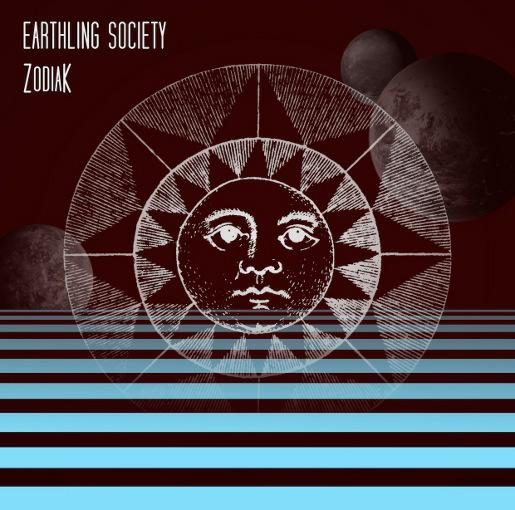 Earthling Society return with their 7th studio album, ZodiaK, a new vinyl only release (it is scheduled to come out in CD format with two bonus tracks sometime in the first half of 2013). Earthling Society have continued to evolve throughout their career, changing directions on almost every album but still retaining a certain core sound that is all their own, and ZodiaK is no exception.
Earthling Society return with their 7th studio album, ZodiaK, a new vinyl only release (it is scheduled to come out in CD format with two bonus tracks sometime in the first half of 2013). Earthling Society have continued to evolve throughout their career, changing directions on almost every album but still retaining a certain core sound that is all their own, and ZodiaK is no exception.
Jettisoning the shorter songs heard on most of their previous albums, this time the band decides to stretch out on two lengthy cuts, the 25-minute title track and the 21-minute The Astral Traveller. In between them is a brief 2-minute instrumental called Silver Phase. It’s not the first time the band has done 20 + minute tracks. There was Plastic Jesus and the Third Eye Blind’s Kozmic Suite No. 2, Tears of Andromeda’s title track and Sci-Fi Hi-Fi’s E.V.I.L.U.S.A. But this is the first time two of them together have made up an album’s worth of material. There’s also a notable difference in sound from previous albums, as these were played and mixed live in the studio all in one day. The music is palpable; it breathes as if alive as it flows naturally from one section to the next. The sound is rawer to, less produced, with a nice gritty edge to it.
The line-up for this album is Fred Laird on guitar, vocals, bouzouki, Moog, Mellotron and syntar; Kim Allen on bass and Jon Blacow on drums. Without a dedicated keyboardist this time out, the sound is a bit less synth and electronics oriented, with more emphasis on guitars, but bandleader Fred Laird does do an admirable job of incorporating a wide range of instrumental sounds into the pallete, considering this is all played live. The title track shifts wildly through deep cosmic ambience; driving riff-based spacerock; Grateful Dead-like jamming and dreamy, psychedelic soundscapes taking the listener on a dazzlingly trip fantastic (apparently through the mind of a serial killer, according to the Nasoni website!). The short Silver Phase seems to be somewhat of a coda to the final part of the previous track. I’m not exactly sure what it’s doing here, but that is perhaps just one of the mysteries of the album that has yet to reveal itself to me. The final track on the album, The Astral Traveller, is my favourite. I found this track to have a bit of a similar vibe to Nektar’s first album, Journey to the Centre of the Eye, as it glides from spacey layers of jazzy guitar and keyboards to experimental echo chamber odysseys. But man, does this one ever catch some serious solar fire in its latter half, as the rhythm section picks up speed and we’re treated to some mind melting, epic guitar riffing and soloing. Truly exhilarating stuff!
This album took a few listens for it to grow on me, but once it did, I was hooked. It’s another excellent release from Earthling Society, a band that seems to be on an endless roll. I’ll be looking forward to hearing the two extra tracks they’ve saved for the CD release, but vinyl nuts will definitely want to pick this one up. Better hurry though, there’s only 400 black vinyl and 100 coloured vinyl copies available, and I’m sure they’ll go quickly!
For more info, visit: http://www.earthlingsociety.co.uk and http://www.nasoni-records.com
Reviewed by Jeff Fitzgerald

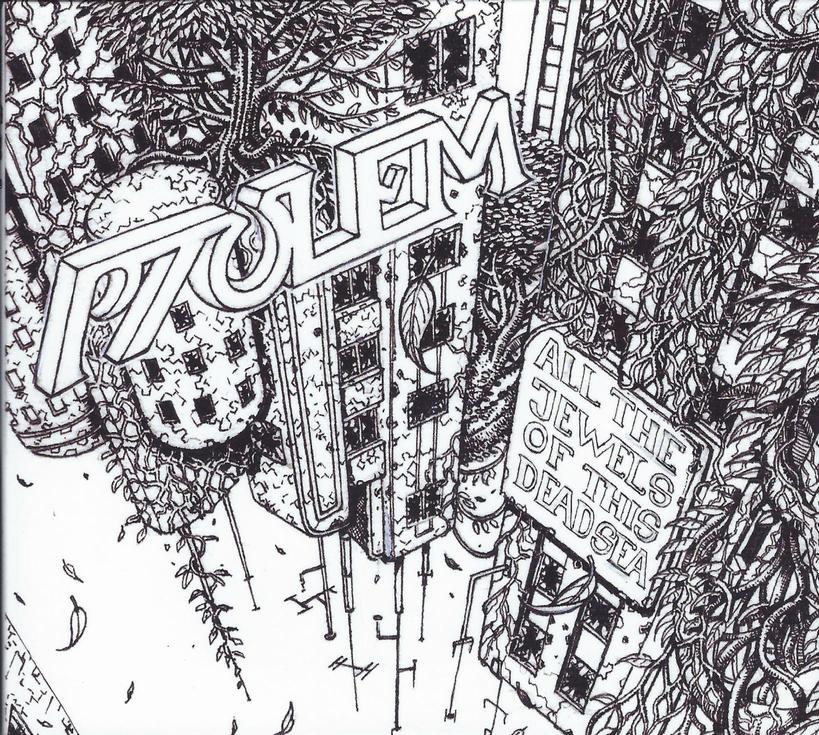 Ptolem are an electronic duo from Geneva, Switzerland, which employs ambient and occasionally bass-heavy beats on this, their second album following 2007’s The Almagest. All The Jewels of This Dead Sea contains twelve instrumental tracks of mainly electronic music, with spacey titles like Submerged Neurotic Continents and Searching for a Reborn Sun. Francesco Raeli and Patrick Brocca do not list the electronic equipment used on this recording, but do make room for guest cellist and guitarists on several tracks.
Ptolem are an electronic duo from Geneva, Switzerland, which employs ambient and occasionally bass-heavy beats on this, their second album following 2007’s The Almagest. All The Jewels of This Dead Sea contains twelve instrumental tracks of mainly electronic music, with spacey titles like Submerged Neurotic Continents and Searching for a Reborn Sun. Francesco Raeli and Patrick Brocca do not list the electronic equipment used on this recording, but do make room for guest cellist and guitarists on several tracks. 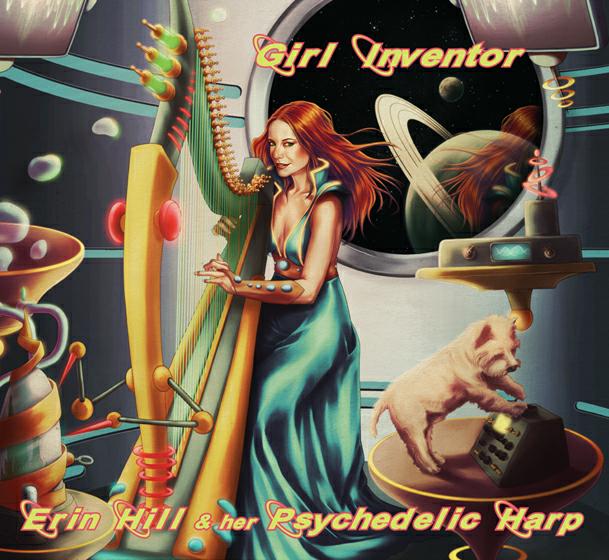 The standard process for new submissions here at Aural Innovations headquarters is that if I’m unfamiliar with the artist it takes its place in the queue and I get to it as quickly as possible. But the name Erin Hill & her Psychedelic harp along with the cover art aroused my curiosity, and when I spotted the “pop, opera, celtic, psychedelic, sci-fi” description on Erin’s business card, I had to hear this right away.
The standard process for new submissions here at Aural Innovations headquarters is that if I’m unfamiliar with the artist it takes its place in the queue and I get to it as quickly as possible. But the name Erin Hill & her Psychedelic harp along with the cover art aroused my curiosity, and when I spotted the “pop, opera, celtic, psychedelic, sci-fi” description on Erin’s business card, I had to hear this right away. Mantric Muse are a Danish space rock band who have been around for over a decade. They’ve appeared on some compilations and I’ve heard some unofficial live sets, but this is their first ever official album. The band are all instrumental. Ozric Tentacles are the most obvious analogy, and Oresund Space Collective sometimes comes to mind, which isn’t a surprise as some of these guys have played with and recorded with that band.
Mantric Muse are a Danish space rock band who have been around for over a decade. They’ve appeared on some compilations and I’ve heard some unofficial live sets, but this is their first ever official album. The band are all instrumental. Ozric Tentacles are the most obvious analogy, and Oresund Space Collective sometimes comes to mind, which isn’t a surprise as some of these guys have played with and recorded with that band.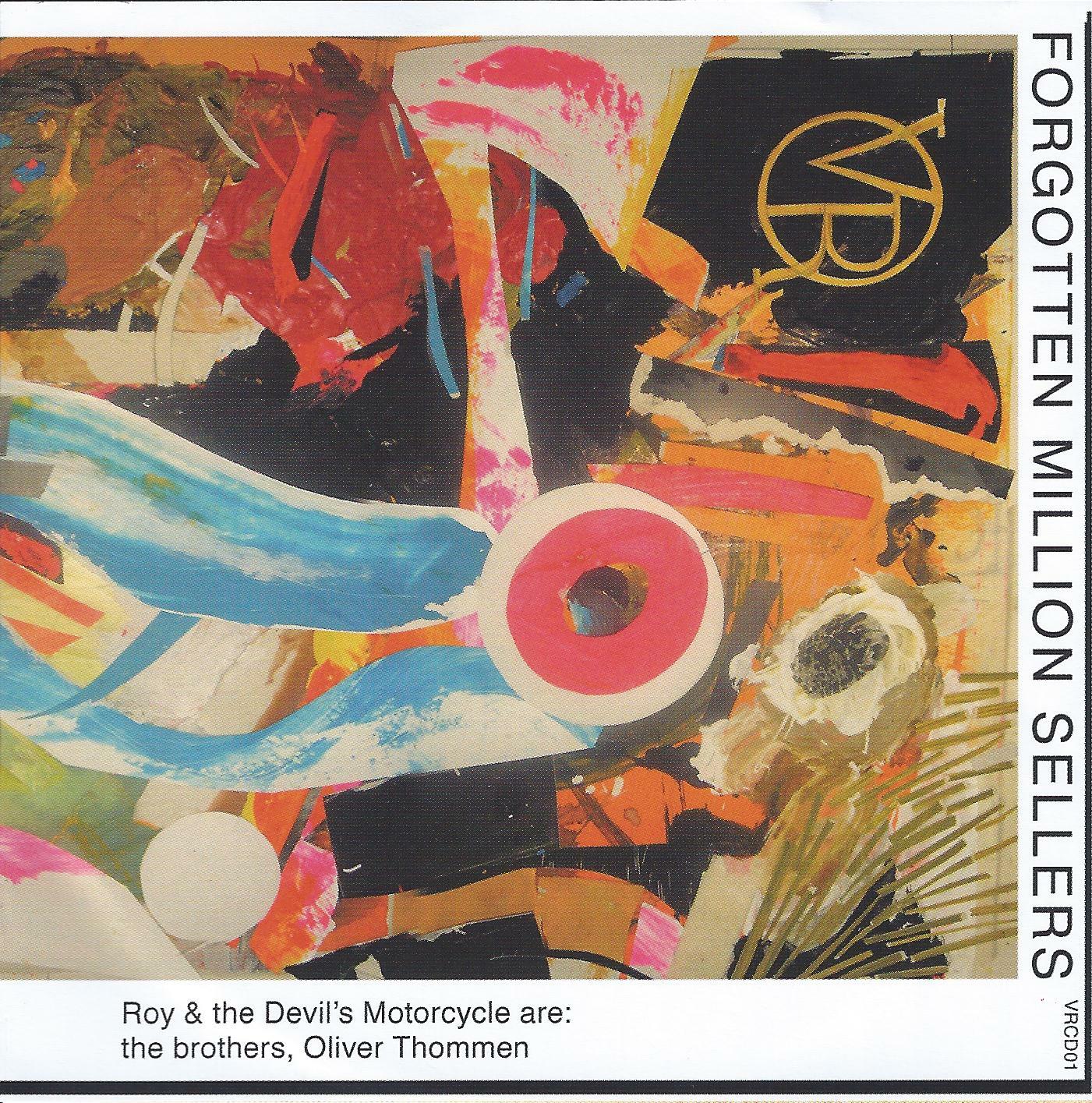 What do you get when you combine country fried rock n’ roll with the manic energy of cowpunk and add in touches of sound collage and generous amounts of mutant guitar noise? If you guessed Roy and the Devil’s Motorcycle, you’re right! And with a sound like that, you might expect these guys to come from some southwestern psych town like Austin, Texas, but these four guys (three of them brothers) come from Switzerland!
What do you get when you combine country fried rock n’ roll with the manic energy of cowpunk and add in touches of sound collage and generous amounts of mutant guitar noise? If you guessed Roy and the Devil’s Motorcycle, you’re right! And with a sound like that, you might expect these guys to come from some southwestern psych town like Austin, Texas, but these four guys (three of them brothers) come from Switzerland!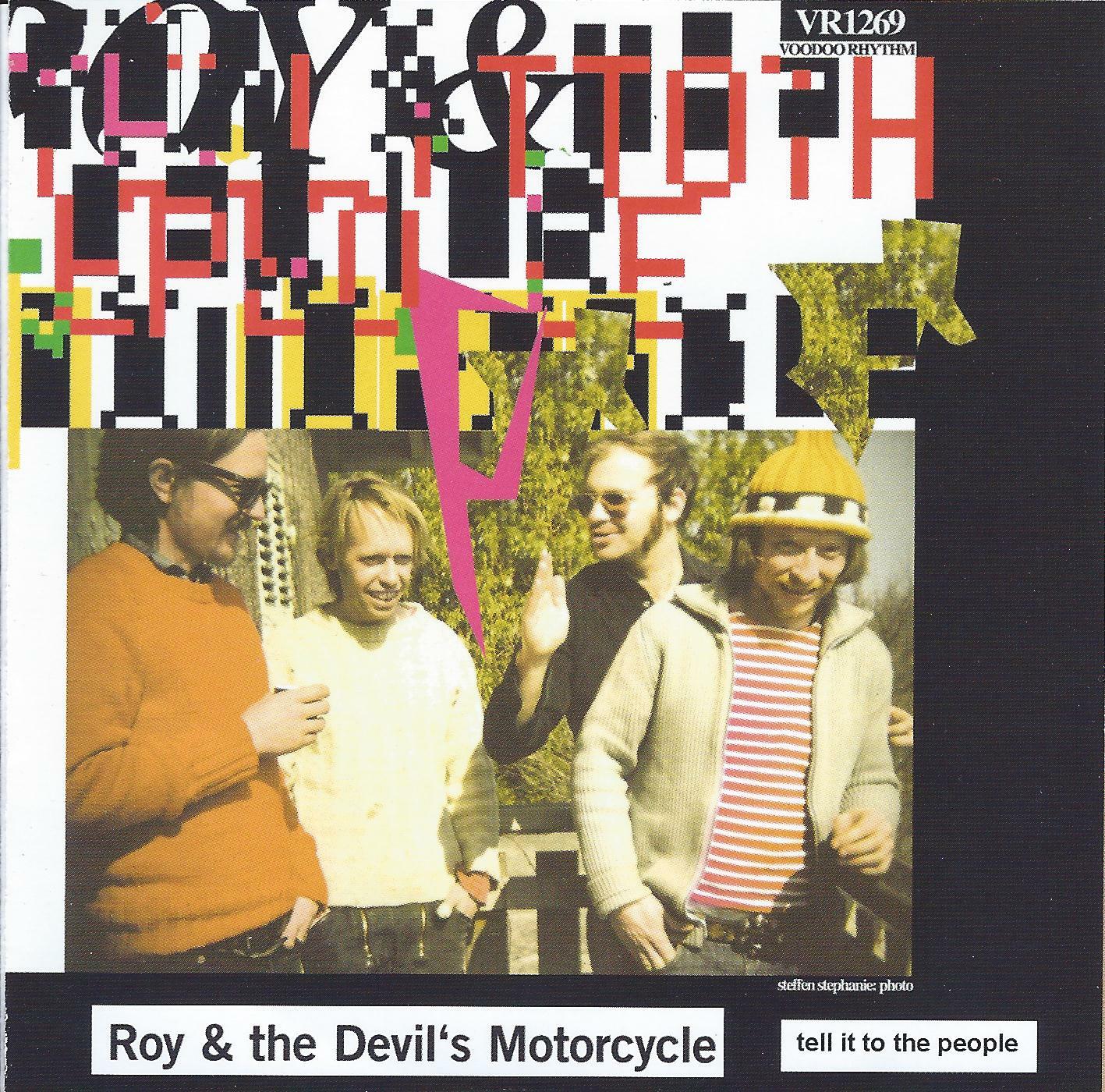 After hearing Forgotten Million Sellers, I dove a little more tentatively into Tell It To the People. My ears were a bit overwhelmed by the relentless sonic battery and boisterous swagger of the previous album. When things on this album started out with noisy feedback squall I thought, ‘here we go again’, but I was totally astonished when Six Pink Cadillac proved to be a druggy acoustic tune, the feedback merely creating an ambient backdrop to the guitars and vocals. Fifteen years on, and things seemed to have changed a bit for the cowpunks from Switzerland! My attention was definitely caught! Second tune, I’m Allright certainly brings back the manic electric energy of Million Sellers, but this time out (as with the entirety of Tell It To the People), the punk attitude has been replaced with more of a wasted hippie aesthetic. I’m Allright comes off sounding like Steve Earle fronting Chrome, and it’s quite cool. But this tune proves to be the loudest song in the set, as the band quickly begins to delve into a unique sort of space/country/rock sound with a distinctly mellow vibe to it. Tunes like the trippy, spaced out Cristina and the droning, echo laden Tears on My Pillow are light years away from the rowdy country punk of Million Sellers. In fact, one of the great standouts of this album is a version of the traditional spiritual Will the Circle Be Unbroken that sounds like Klaus Schulze playing with the Nitty Gritty Dirt Band; a deep space hymn for the spiritual hippie in all of us. Far out, man! And from the wasted granola munching freak folk of Water Air Food Love to the ambient psychedelic forest journey of Piggy Bank, to the ‘spirit of the 60’s’ country psychedelia of Henry’s Blues, Tell It To the People is an entirely different experience from Million Sellers, and it’s an experience I have to say, I definitely dug. Gram Parsons coined the term ‘Cosmic American Music’, which he used to describe the music on his GP and Grievous Angel albums. As innovative as his music was though, I never honestly got the ‘cosmic’ part of Parsons’ sound. Here, however, on Tell It To the People, ‘Cosmic American Music’ is reborn. Who’d have thought it would come from a group of guys from Switzerland?
After hearing Forgotten Million Sellers, I dove a little more tentatively into Tell It To the People. My ears were a bit overwhelmed by the relentless sonic battery and boisterous swagger of the previous album. When things on this album started out with noisy feedback squall I thought, ‘here we go again’, but I was totally astonished when Six Pink Cadillac proved to be a druggy acoustic tune, the feedback merely creating an ambient backdrop to the guitars and vocals. Fifteen years on, and things seemed to have changed a bit for the cowpunks from Switzerland! My attention was definitely caught! Second tune, I’m Allright certainly brings back the manic electric energy of Million Sellers, but this time out (as with the entirety of Tell It To the People), the punk attitude has been replaced with more of a wasted hippie aesthetic. I’m Allright comes off sounding like Steve Earle fronting Chrome, and it’s quite cool. But this tune proves to be the loudest song in the set, as the band quickly begins to delve into a unique sort of space/country/rock sound with a distinctly mellow vibe to it. Tunes like the trippy, spaced out Cristina and the droning, echo laden Tears on My Pillow are light years away from the rowdy country punk of Million Sellers. In fact, one of the great standouts of this album is a version of the traditional spiritual Will the Circle Be Unbroken that sounds like Klaus Schulze playing with the Nitty Gritty Dirt Band; a deep space hymn for the spiritual hippie in all of us. Far out, man! And from the wasted granola munching freak folk of Water Air Food Love to the ambient psychedelic forest journey of Piggy Bank, to the ‘spirit of the 60’s’ country psychedelia of Henry’s Blues, Tell It To the People is an entirely different experience from Million Sellers, and it’s an experience I have to say, I definitely dug. Gram Parsons coined the term ‘Cosmic American Music’, which he used to describe the music on his GP and Grievous Angel albums. As innovative as his music was though, I never honestly got the ‘cosmic’ part of Parsons’ sound. Here, however, on Tell It To the People, ‘Cosmic American Music’ is reborn. Who’d have thought it would come from a group of guys from Switzerland? Fuzz Manta comes from Copenhagen, Denmark and they describe their music as ’70’s hard rock with female vocals. Opus II is the band’s second full length CD plus they also have two EP’s out. Their influences vary from artists such as Yes, King Crimson, Led Zeppelin, Robin Trower, Deep Purple, Black Sabbath and Uriah Heep. It does sound tempting, doesn’t it? Thoroughly enjoyed the impressive well-played opener Motumann; Man With No Face (definitely has a Uriah Heep-like feel and vibe to it); Quiet Monday that sort of maybe reminds me of, say, Heart; the eight-minute Lithia’s Box with its Black Sabbath-like guitar [Opus II only gets better with each play] and Turn Around. Then before this opus (no pun intended) draws to a close, I took in White And More, the powerful Corrosion and the eleven-minute Let Me Walk (very ’70’s-ish to say the least, as this track clearly displays the band’s heavy Zeppelin influence when Robert Plant, Jimmy Page, John Paul Jones and John Bonham were having a blues moment). Very nice. Wanted to be sure and mention that I did hear a couple of songs from their first self-titled CD Fuzz Manta (’09) and I thought from at least those two cuts, that debut offering was just as good as Opus II – plus they have a third CD just out now titled Vortex Memplex where I saw on their own site that the CD’s last track runs over the thirty-minute mark.
Fuzz Manta comes from Copenhagen, Denmark and they describe their music as ’70’s hard rock with female vocals. Opus II is the band’s second full length CD plus they also have two EP’s out. Their influences vary from artists such as Yes, King Crimson, Led Zeppelin, Robin Trower, Deep Purple, Black Sabbath and Uriah Heep. It does sound tempting, doesn’t it? Thoroughly enjoyed the impressive well-played opener Motumann; Man With No Face (definitely has a Uriah Heep-like feel and vibe to it); Quiet Monday that sort of maybe reminds me of, say, Heart; the eight-minute Lithia’s Box with its Black Sabbath-like guitar [Opus II only gets better with each play] and Turn Around. Then before this opus (no pun intended) draws to a close, I took in White And More, the powerful Corrosion and the eleven-minute Let Me Walk (very ’70’s-ish to say the least, as this track clearly displays the band’s heavy Zeppelin influence when Robert Plant, Jimmy Page, John Paul Jones and John Bonham were having a blues moment). Very nice. Wanted to be sure and mention that I did hear a couple of songs from their first self-titled CD Fuzz Manta (’09) and I thought from at least those two cuts, that debut offering was just as good as Opus II – plus they have a third CD just out now titled Vortex Memplex where I saw on their own site that the CD’s last track runs over the thirty-minute mark. Kellar – “Beloved Dean of Magic” (self-released 2012)
Kellar – “Beloved Dean of Magic” (self-released 2012)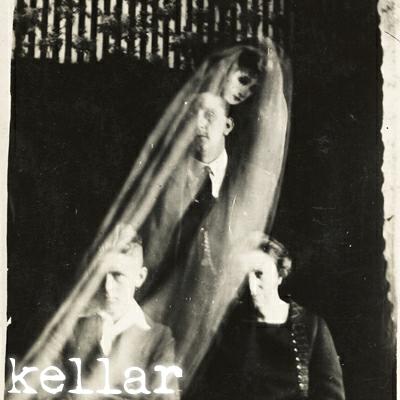 Kellar – Smokescreen (self-released 2012)
Kellar – Smokescreen (self-released 2012)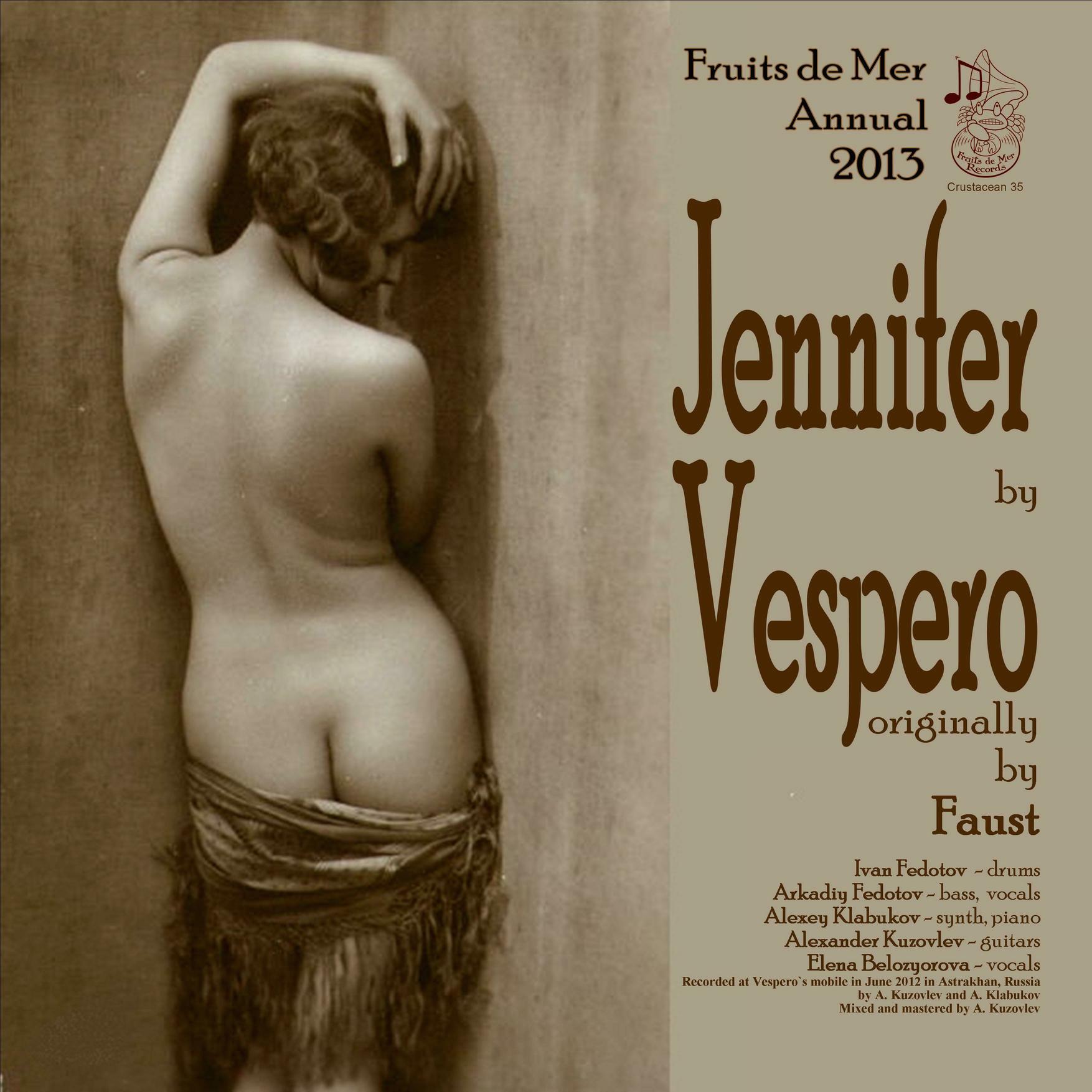 The Fruits de Mer annuals feature what the label considers the best of what they hoped to release the past year but for whatever reasons couldn’t. And the 2013 edition has a pair of winners indeed.
The Fruits de Mer annuals feature what the label considers the best of what they hoped to release the past year but for whatever reasons couldn’t. And the 2013 edition has a pair of winners indeed. The League Of Psychedelic Gentlemen is a 7″ EP from Fruits de Mer Records with new and previously unreleased songs by Nick Nicely, The Bevis Frond, Anton Barbeau and Paul Roland.
The League Of Psychedelic Gentlemen is a 7″ EP from Fruits de Mer Records with new and previously unreleased songs by Nick Nicely, The Bevis Frond, Anton Barbeau and Paul Roland.